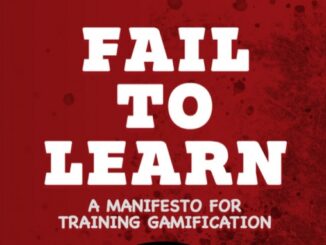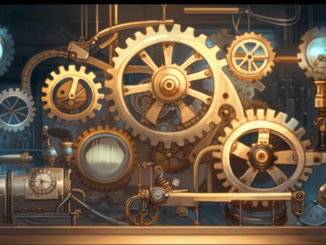
Games are an effective way to cultivate SEL (social-emotional learning) skills such as critical thinking, problem solving, and communication. By bringing these skills into a game, players develop the ability to become more adept at making informed and strategic decisions. One example of how SEL skills can make a difference can be seen in a game of strategy and cooperation such as Settlers of Catan.
In this game, each player must use a combination of critical thinking, problem solving, and communication skills in order to be successful. Each player has to consider the advantages and disadvantages of each decision, and must collaborate with other players to acquire resources and build settlements. In the end, the player who is able to use their skills to make the most strategic decisions and effectively communicate with their fellow players is the winner.
Settlers of Catan is available on Amazon
Games such as Settlers of Catan are a great example of how SEL skills can be used to make a difference to our interpersonal experiences. These skills can be invaluable in a variety of real-world situations, from classroom projects to business meetings. To dive deeper into this context, we interviewed Manik and Chelsea from Tomo Club for this month’s edition of Ludogogy. Tomo Club uses social games to teach skills in video meets to K-12 students. These games and meets are moderated by trained professionals who keep an eye on the activity and ensure students make progress on their learning goals.
Q. What is the importance of SEL skills in today’s world, according to you?
A. It is essential that the new generation of students is equipped with SEL skills, also called 21st century and life skills. These skills, such as collaboration and critical thinking, are necessary for today’s complex world. They are integral in helping young people to learn how to interact with others, how to manage their emotions, and how to develop self-confidence and resilience. They provide a foundation for success in academic, professional, and personal domains. Without them, the new generation will struggle to compete in the global economy and reach their full potential.
Q. How has the importance of critical thinking in particular changed recently?
A. Today, there are tools like ChatGPT that have sorted out small-scale tasks, enabling us to focus on larger areas like decision-making and strategy. Now the crucial part is to know how to use such resources, which is where critical thinking plays a role. In the near future, more emphasis will be placed on creativity, teamwork, and problem solving – from the workplace to the personal domain. It’s important to figure out what to do and align people to achieve goals – as the “how” behind such work is getting simpler with more resources to the modern person.

Q. Usually game-based learning has a challenge of being assessed and tested conclusively. How do you present progress and test learning in students?
A. We use an elaborate, descriptive rubric that is broken into competencies, subskills, and even further into 40 subskills. Each of these subskills have descriptors that can be used to evaluate and understand individual performance. In order to do this, the teacher and teaching assistant must sit together and discuss each child’s performance and provide remarks, as well as recommendations. This ensures that the evaluations are thorough and that no student is overlooked.
The teacher and teaching assistant actively engage with the students to provide guidance and support. This includes providing feedback and advice on different strategies, helping the student stay motivated, and generally being a mentor.
Q. Who are the people involved in delivering an experience like yours?
A. We have a small, lean team that starts with the development of a suitable curriculum, then progresses to game design, art, development, followed by rigorous testing. This process begins with adults as well as children, in different geographical locations to gauge reactions. Remarkably, although children have different contexts and curricula, their behaviors and preferences for fun in games remain surprisingly similar – unlike adults. This has implications for game design as it indicates that despite geographical differences, children’s responses to games can be consistent.
Q. Games are synonymous with fun. It’s easy to give feedback that praises someone for their activity in a game. But how do you give critical feedback that addresses negative behaviors, considering children like to play games specifically for fun?
A. It’s the feedback on what we did wrong that is more beneficial in learning. Our moderators are highly trained in providing feedback that is constructive in nature. If turns are broken in the conversation, for example, it is important to give specific feedback to the individual.
A report is shared with the parents of the student so that they can better understand the feedback. There is a section called Collaboration and Action, where resources and videos are provided to both parents and children to watch together. This helps all parties understand the feedback in a deeper way and encourages an interactive experience.
You can take a demonstration of the experience in Play And Learn events organized by Tomo Club on alternate Saturdays, where educators, parents, and curious minds try games like Secret Santa and Crisis Crew :
Q. What would be your advice to someone wanting to use games in their classrooms?
A. To integrate games effectively, our advice is to consider the context of the learner. For working with adults, providing specific, exact instructions is usually best. With kids, however, it can be tricky to give a lot of instructions, as this overwhelms them. The more we delay gratification, the better equipped the kids will be to manage stress.
Understanding a game requires familiarity, so allow players time to get familiar with it. If a game is difficult, you can scaffold it, breaking it down into smaller, easier tasks, and then building on them as the learner progresses.

Conclusion
In conclusion, learning SEL skills is crucial for personal and social development, and doing so in a social and fun way can make the experience even more effective and enjoyable. As evidenced by the various initiatives and programs offered by organizations like Tomo Club, engaging in activities such as games can help individuals cultivate skills like self-awareness, empathy, and communication. Incorporating SEL skills into social and fun activities can benefit individuals of all ages and backgrounds, leading to greater well-being and success in all aspects of life. The testimonials of participants in Tomo Club’s SEL programs also provide insight into this impact. Organizations like Tomo Club are making a significant difference in the lives of learners by providing opportunities to learn and grow in a socially engaging and enjoyable way. You can try these games and experiences in online events every alternate Saturday that you can register for here : https://lu.ma/gamesandeducation
- Social & Emotional Learning (SEL) with Tomo Club - 7th March 2023
- The Power of Compounding in Games - 14th February 2023
- Playing your Cards Right – Walkman Lab - 13th September 2022
- Social & Emotional Learning (SEL) with Tomo Club - 7th March 2023
- The Power of Compounding in Games - 14th February 2023
- Playing your Cards Right – Walkman Lab - 13th September 2022





Be the first to comment